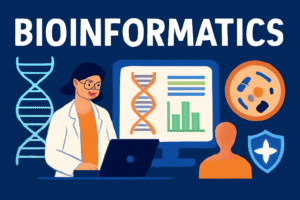Understanding Surrogate Endpoints in Clinical Trials
Hey there! Ever heard of “surrogate endpoints” in clinical trials? Sounds like some high-brow medical jargon, right? 🤔 Well, let’s break it down together in a way that’s easy to digest and, dare I say, a bit fun! 🎉
What Exactly are Surrogate Endpoints? 🤷♂️
Picture this: You’re a scientist 🥼 conducting a study on a new heart medication. You want to know if it prevents heart attacks, but waiting around for heart attacks to happen? Not practical or ethical. Enter surrogate endpoints! 🌟 They are like stand-ins or understudies 🎭 in a play, representing the big event (like a heart attack) without actually being it.
Some Real-World Examples 🌍
Think of blood pressure measurements in heart studies. High blood pressure = higher risk of heart attacks. So, if a drug lowers blood pressure, it’s assumed it’ll reduce heart attacks too. It’s like judging a cake’s yumminess 🍰 by its smell rather than waiting to eat it!
Why Are They So Handy? ✋
- Quick Results: Surrogate endpoints give us faster insights. ⏱️ Waiting years for a final outcome? Not always feasible.
- Ethical Reasons: It’s often just not right to wait for something bad (like a disease) to happen. 🚫
- Saving Money: Shorter trials mean less money spent. 💰
But, It’s Not All Sunshine and Rainbows 🌦️
Using surrogate endpoints can be tricky:
- Accuracy Matters: If the surrogate doesn’t accurately predict the real deal, we might get the wrong idea. 🎯
- Regulatory Watchdogs: Bodies like the FDA keep a close eye to ensure these stand-ins truly reflect what we’re interested in. 🧐
Wrapping It Up 🎁
Surrogate endpoints in clinical trials are super useful but need to be chosen wisely. They make research quicker, more ethical, and budget-friendly, but they’ve got to be accurate. As medical science grows, these nifty tools will keep evolving. 🌱
So, next time someone mentions surrogate endpoints, you can say, “Ah, the understudies of the clinical trial world!” 🌟
